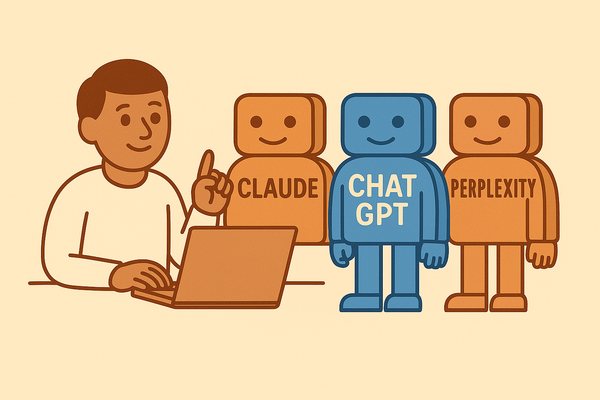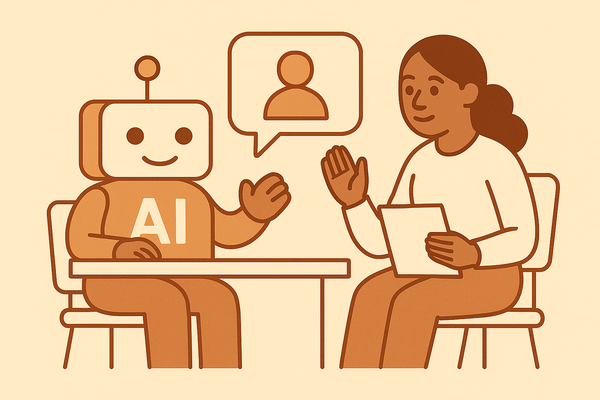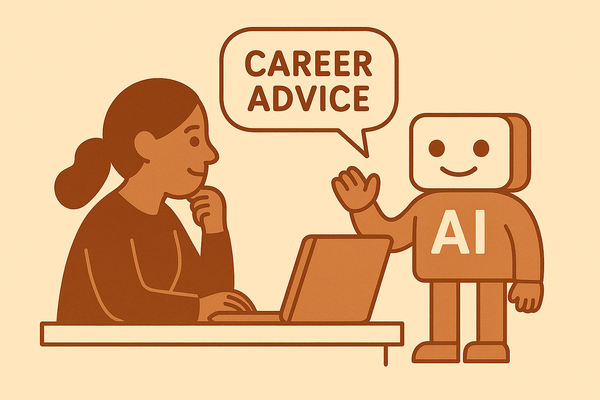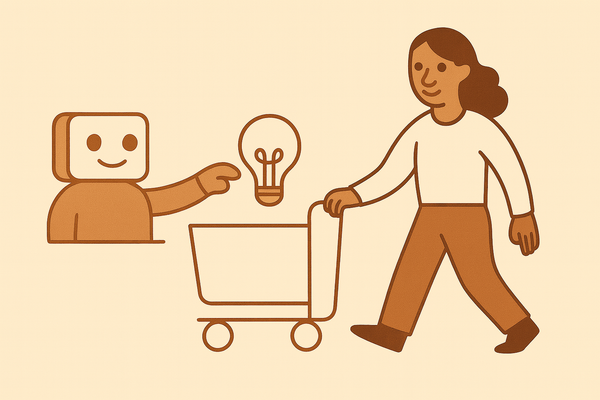Why Most People Quit AI Too Soon
Here's how to turn early missteps into something worthwhile.
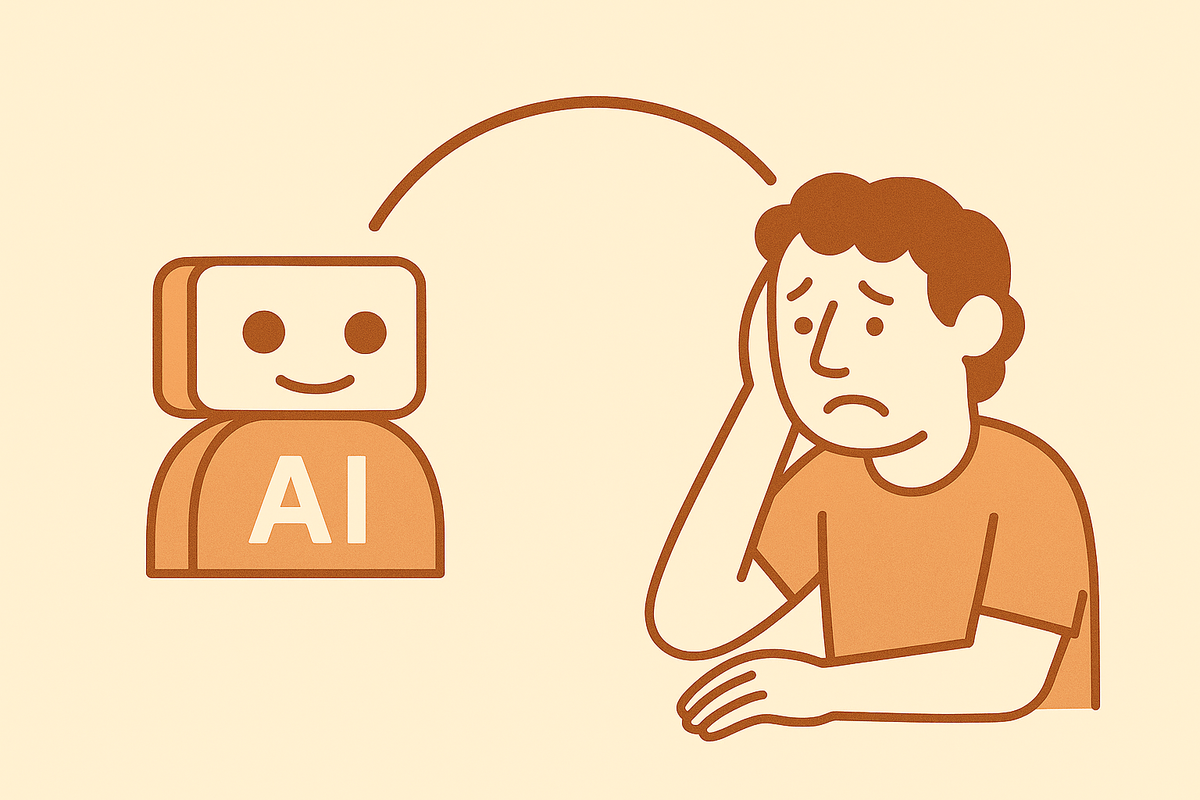
Remember the first time you tried AI? Maybe ChatGPT wrote a surprisingly decent email, or Claude helped you brainstorm ideas that made sense. For a moment, it felt like the future had arrived early.
Then the next few attempts didn't go as well.
The AI misunderstood what you wanted, gave you generic responses, or produced something that needed so much editing you wondered if doing it yourself would have been faster. That initial excitement faded into something familiar: "Maybe I'm just not good at this."
If this sounds familiar, you're hitting what Seth Godin calls "The Dip": that frustrating stretch between starting something new and getting good at it, where most people give up.
AI has its own version of this dip. Recognizing it changes everything. This isn't about your lack of technical skill or AI being overhyped. It's about understanding that working with AI requires a different approach than learning most other tools.
The people who push through this phase unlock something valuable: they stop being AI users and become AI collaborators. They figure out how to guide these systems toward helpful results.
Here's why that initial disappointment happens, how to tell if you're making progress, and what works for developing a productive relationship with AI.
Why the Disappointment is Information
Most people approach AI expecting it to understand complex instructions right away and deliver exactly what they had in mind with minimal input.
This sets you up for frustration. AI isn't reading your mind or drawing on decades of industry experience. It's a pattern-matching system that can do impressive things, but only when you learn how to guide it properly.
Here's a typical example: You ask AI to write a job description for a new role at your company. The first draft comes back professional, grammatically correct, but completely generic. It could be for any company in any industry - there's nothing that reflects your specific culture or requirements.
Your first reaction might be "This AI isn't as smart as everyone says" or "Why doesn't it understand what I mean?"
But here's what happened: The AI gave you exactly what you asked for, but you didn't provide the context, company culture, or specific details that would make it your job description. The disappointment isn't failure but feedback about what's missing.
Compare this to someone who's learned to work with AI effectively. They start with that same generic prompt, but they treat the first output as raw material, not a finished product. They look at what the AI understood and what it missed, then guide it toward their vision through follow-up prompts.
The shift happens when you realize AI isn't magic but more like working with a really smart but literal intern. The real power isn't in getting perfect results immediately. It's in how quickly you can iterate and refine ideas together.
Enjoying this post? Subscribe to my newsletter to get similar posts each week.
How to Push Through the Frustration
The most common reason people quit working with AI is the irritation of those early attempts. They can see the potential but don't know how to bridge the gap between disappointing first drafts and useful results.
Getting through this phase isn't about a single breakthrough moment. It's about developing specific habits that turn frustration into progress.
Treat poor output as feedback, not a dead end
Every generic or unhelpful AI response is telling you something. Maybe it didn't understand your intent, maybe the context was missing, or maybe the prompt was too vague. Instead of thinking "AI is bad at this," ask "What did this response miss?"
That generic job description tells you the AI understood the basic requirements but missed your company's specific culture and priorities. This becomes specific guidance for your next prompt: "Make this reflect our startup environment and emphasize growth opportunities and collaborative culture."
This perspective shift moves you from frustrated user to collaborative partner. The disappointment becomes useful information instead of a stopping point.
Embrace the conversation
Working with AI is less like giving commands and more like having a discussion with someone who's helpful but needs clear direction. It usually takes several exchanges to get somewhere worthwhile.
Instead of starting over when you get a mediocre result, continue the conversation: "This performance review template needs to be more specific. Can you add concrete examples and focus on growth-oriented feedback?"
Then follow up based on what you get: "Good, now make it shorter and more actionable" or "Create versions for different seniority levels."
Each round builds on the previous one. You're not just getting different versions - you're teaching the AI to understand your specific needs and style. The process becomes iterative rather than transactional.
Know what you bring to the table
AI provides speed and breadth, but you provide judgment, context, taste, and domain knowledge. You're not competing with the system but directing it.
AI can generate multiple options quickly, synthesize information, and spot patterns. But it struggles with nuance, understanding your specific audience, and knowing what matters in your particular situation.
Your role is providing the context AI can't access and making the judgment calls it can't make. When AI drafts an employee handbook section, you know which policies actually matter for your team culture. When it suggests onboarding checklists, you can spot which steps align with how your company really works and which ones would just create busywork.
You're not trying to make AI more human. You're learning to be more effective at working alongside a system that processes information differently than you do.
Start with lower stakes
Here's something practical: don't begin with your most important projects. Try AI on smaller tasks first like job posting headlines, meeting summaries, or research questions. Build your comfort with the back and forth on work that won't make or break anything if it goes sideways.
Once you develop a feel for how to guide AI effectively, you can tackle bigger challenges with more confidence. The skills transfer, but the learning curve is less stressful when the stakes are lower.
The Real Question
That initial disappointment with AI isn't a sign you're not cut out for this or that the technology is oversold. It's a signal that you're at the beginning of learning something valuable.
Everyone hits this frustrating phase. The question is whether you'll push through it long enough to discover what becomes possible when you learn to work with AI effectively.
Most people quit right before it gets good. Don't be most people.
Enjoyed this post? Subscribe to my newsletter to get similar posts each week.

